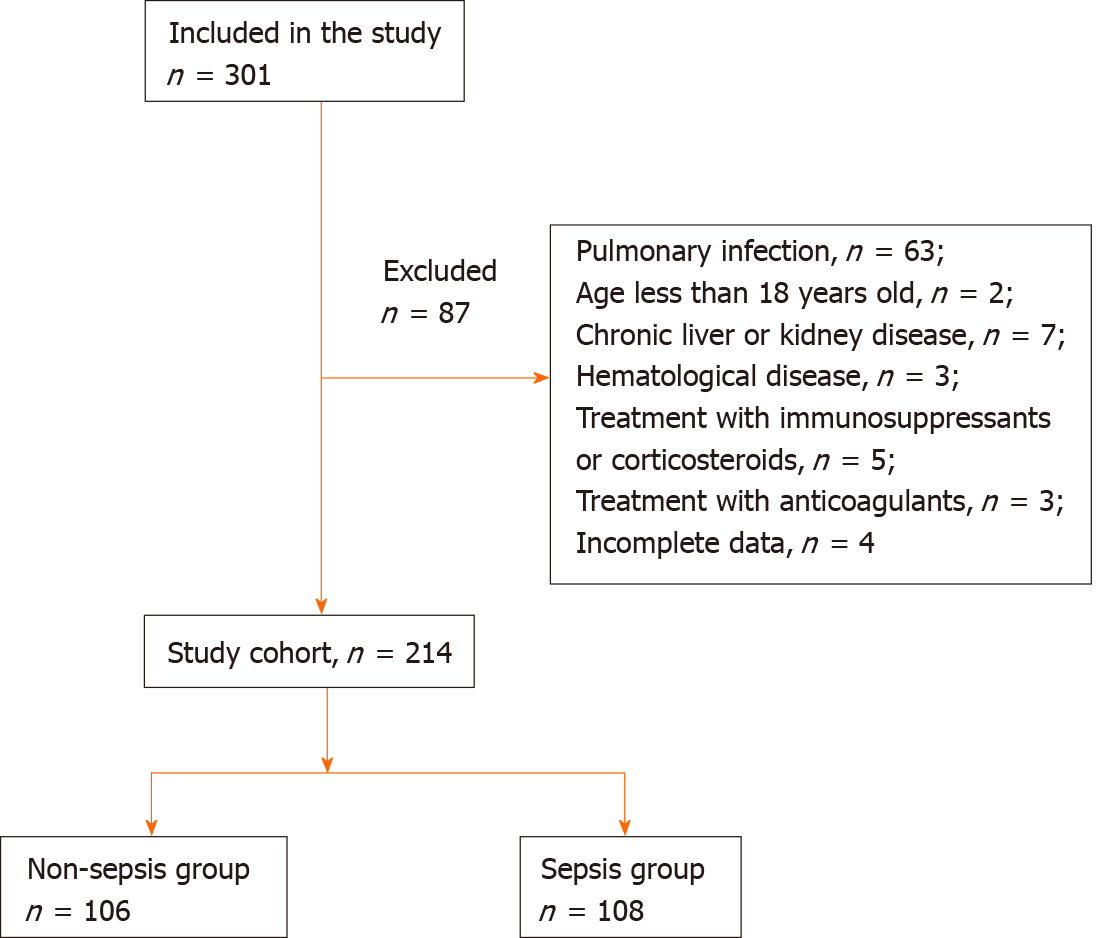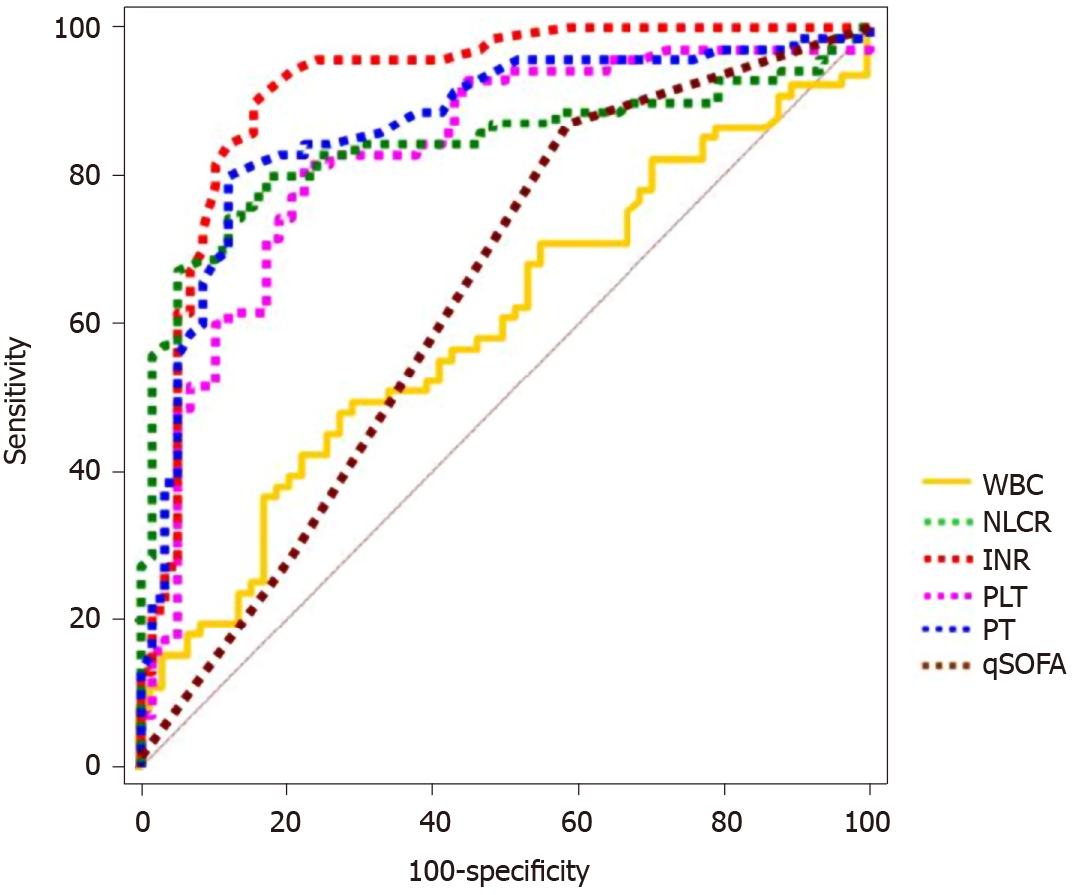Copyright
©The Author(s) 2021.
World J Clin Cases. Sep 6, 2021; 9(25): 7405-7416
Published online Sep 6, 2021. doi: 10.12998/wjcc.v9.i25.7405
Published online Sep 6, 2021. doi: 10.12998/wjcc.v9.i25.7405
Figure 1
Study population.
Figure 2 Receiver operating characteristic curve of white blood cell, neutrophil-lymphocyte count ratio, platelet, prothrombin time, international normalized ratio and quick Sequential “Sepsis-related” Organ Failure Assessment score within 24 h after admission between sepsis and nonsepsis.
The results showed that the area under the curve of international normalized ratio (INR), prothrombin time (PT), neutrophil-lymphocyte count ratio (NLCR), platelet (PLT), quick Sequential “Sepsis-related” Organ Failure Assessment (qSOFA), and white blood cell count (WBC) in the diagnosis of sepsis were 0.918, 0.868, 0.83, 0.841, 0.638 and 0.599, respectively, and they were statistically significant (P < 0.05). The study indicates that the INR could be a helpful diagnostic biomarker in sepsis.
Figure 3 Correlation analysis of international normalized ratio value with Sequential “Sepsis-related” Organ Failure Assessment score and Acute Physiology and Chronic Health Evaluation II score, and analysis of international normalized ratio value for predicting the risk of nonpulmonary sepsis.
A: Spearman rank correlation analysis between international normalized ratio (INR) value and Sequential “Sepsis-related” Organ Failure Assessment (SOFA) score; B: Spearman rank correlation analysis between INR value and Acute Physiology and Chronic Health Evaluation II (APACHE II) score; C: The positive prediction rate and negative prediction rate of sepsis under different INR values. 95%CI: 95% confidence interval.
- Citation: Zhang J, Du HM, Cheng MX, He FM, Niu BL. Role of international normalized ratio in nonpulmonary sepsis screening: An observational study. World J Clin Cases 2021; 9(25): 7405-7416
- URL: https://www.wjgnet.com/2307-8960/full/v9/i25/7405.htm
- DOI: https://dx.doi.org/10.12998/wjcc.v9.i25.7405











